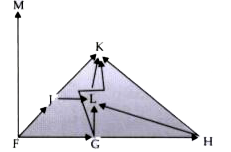List five carnivores.
Step-by-Step Solution:
1. Understand the Definition of Carnivores:
- Carnivores are animals that primarily eat meat. They rely on flesh for their nutrition and do not consume plant-based foods.
2. Identify Characteristics of Carnivores:
- Carnivores often have sharp teeth and claws that help them catch and tear their prey. They are typically classified as predators.
3. List Examples of Carnivores:
- Here are five examples of carnivorous animals:
1. Tiger
2. Lion
3. Cheetah
4. Wolf
5. Polar Bear
4. Confirm the Classification:
- All the animals listed above are known for their meat-eating habits and are categorized as carnivores.
5. Conclude the Answer:
- Therefore, the five carnivores are Tiger, Lion, Cheetah, Wolf, and Polar Bear.
---
- Carnivores are animals that primarily eat meat. They rely on flesh for their nutrition and do not consume plant-based foods.
- Carnivores often have sharp teeth and claws that help them catch and tear their prey. They are typically classified as predators.
- Here are five examples of carnivorous animals:
1. Tiger
2. Lion
3. Cheetah
4. Wolf
5. Polar Bear
- All the animals listed above are known for their meat-eating habits and are categorized as carnivores.
- Therefore, the five carnivores are Tiger, Lion, Cheetah, Wolf, and Polar Bear.
Similar Questions
Knowledge Check
1. All animals are carnivorous
2. Some animals are not carnivorous
3. Animals are not carnivorous
4. Some animals are carnivorousA1 and 2B2 and 3C1 and 3D3 and 4
Which of the following is absent in carnivores?
View SolutionThe small intestine in herbivores is longer than that in carnivores. Why ?
View SolutionStudy the following food web

Which organisms represent top level carnivores?
View SolutionGive two peculiar charaters of carnivores. Give two example.
View SolutionState the reason why rabbit is considered as a herbivore and tiger as a carnivore.
View SolutionList five functions of hormones.
View SolutionList five reasons for the promotion of Sustainable Development.
View Solution
